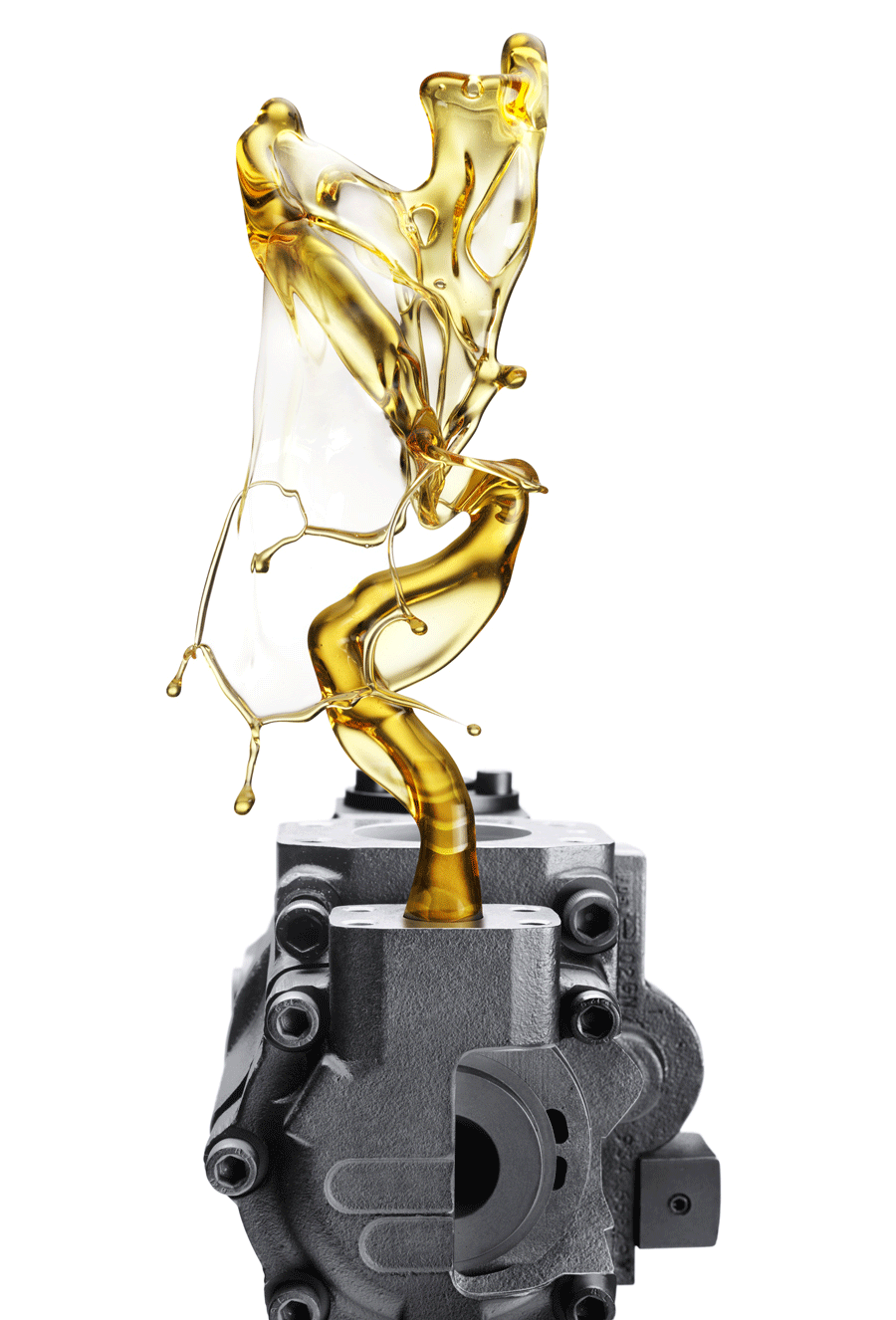Choose a product that protects, extends equipment life and meets environmental needs.
There is an increasing awareness of the connection between industrial companies and their influence on the Earth’s environment. This has sparked the development and use of hydraulic fluids that can reduce environmental impact. To help promote these newer, friendlier products, there is a growing trend toward using terms—such as biodegradable, non-toxic, energy efficient and no sheen. Defined differently by each lubricant manufacturer, the ambiguity of these words has caused confusion among many maintenance professionals when searching for a hydraulic fluid.
This article offers insight into these widely used product descriptions, detailing the inherent benefits and limitations for each. By using this information as a guide, maintenance professionals will be able to make a better informed decision about which hydraulic fluid will meet their performance and environmental needs.

Companies should take every precaution to minimize the chance that its operation may have a lasting impact on the environment.
How Friendly Are You?
The concept of reducing environmental impact refers to any good, service, law, guideline or policy that claims to impose minimal or no harm on the environment. This description is vague and does not provide a quantifiable scale for determining how “minimal” an impact can be and still produce desired “environmental” benefits. In terms of hydraulic fluids, several product characteristics can be evaluated, including “biodegradability,” “non-toxic,” “energy efficient” and “no sheen” to determine how “friendly” a product is to the environment.
Biodegradability
Biodegradability is the chemical breakdown of materials, such as petroleum products, by living organisms in the environment. This process depends on certain microorganisms—such as bacteria, yeast and fungi—that break down the molecules for sustenance. Certain chemical structures are more susceptible to microbial breakdown than others. Vegetable oils, for example, will biodegrade more rapidly than petroleum oils. Most petroleum products typically will biodegrade in the environment within two months to two years. The two main types of biodegradability are inherent and readily biodegradable.
End users can be confused regarding the terms inherently and readily biodegradable. They may unwittingly purchase a hydraulic fluid marketed as inherently biodegradable thinking that they have received similar biodegradability performance as a tested readily biodegradable product. In general, most lower viscosity mineral oil lubricants (up to ISO VG 320) meet the Organization for Economic Cooperation and Development (OECD) inherently biodegradable classification, which means biodegradation better than 20 percent in 28 days or 12 weeks, depending on the test. Readily biodegradable fluids must biodegrade by more than 60 percent within 28 days, which precludes most, if not all, mineral oils.
The benefits of using a biodegradable hydraulic fluid are considerable should the fluid breach containment, but it should also be understood how biodegradability can impact a hydraulic fluid’s performance. For example, vegetable-based fluids are generally more readily biodegradable, but will not provide comparable service life to that of a standard mineral hydraulic fluid. However, when compared to conventional, mineral-based fluids, synthetic-based fluids will likely offer extended service life, while also being more readily biodegradable.
Aquatic Toxicity
Aquatic toxicity refers to the adverse response of water-based organisms to chemicals or physical agents ranging from mortality to physiological responses, such as impaired reproduction or growth abnormalities. Hydraulic fluids that claim to have a low aquatic toxicity need to have passed OECD 202 (daphnia water flee) or 203 (fish) testing where greater than 50 percent of the test subjects survive at 1,000 parts per million hydraulic fluid dosage.
There can be a misperception that any hydraulic fluid that does not contain zinc is considered to have a low aquatic toxicity. While zinc content can influence aquatic toxicity test performance, zinc-free does not correlate directly to low aquatic toxicity.
Energy Efficiency
Hydraulic fluids, and in fact all lubricants, are inherently designed to reduce work by mitigating friction between moving, sliding or rotating parts. Reductions in energy used per work cycle can yield significant operating cost reductions and environmental gains.
Efficiency gains based on hydraulic fluid performance are obtained through excellent viscosity control, which includes shear-stable, high viscosity index (VI) fluids and reduced tractional coefficients. VI is a calculation that describes viscosity stability in relation to temperature. The higher the VI, the less viscosity changes at elevating operating temperature. There are practical limits to VI because high VI improvers tend to shear, which permanently reduces the oil’s viscosity. Shear-stable, high VI fluids typically range in VI from 150 to 200.
In addition, seek out lubricants that have been tested based on ASTM D7721 Standard Practice for Determining the Effect of Fluid Selection on Hydraulic System or Component Efficiency. This protocol is a standardized method of testing that compares a lubricant’s energy efficiency to a conventional mineral-oil-based fluid. Formulated with extensive laboratory and in-service field testing, one series of hydraulic oils can help provide quantifiable increases in hydraulic efficiency compared with conventional hydraulic oils. In controlled laboratory and field efficiency testing in accordance with ASTM D7721, this lubricant was measured to provide up to a 6 percent improvement in hydraulic pump efficiency compared to a conventional oil when operating in standard hydraulic applications.1
No Sheen
Operators on any application that have machinery close to or on a body of water should be aware that hydraulic fluids that do not leave a sheen, or film that is created when oil settles on the top of water, are now commercially available. Note that these products are not any more or less toxic to plants and animals than oil that does leave a sheen.
Although aesthetically unpleasing, an oil sheen allows for faster detection and aids in determining the source and severity of the oil leak or spill. Using an oil that does not leave a sheen puts companies at greater risk of having a leak or spill go undetected, which may result in greater environmental harm and higher operating costs.
Selection of a hydraulic fluid that generates an oil sheen is a preferred feature companies should seek instead of no or limited sheen.
Hydraulic System Performance
The service life of a hydraulic fluid is often overlooked when evaluating the environmental impacts of a product. Use of a hydraulic fluid that lasts longer than conventional products can help minimize the amount of used oil waste. Less waste clearly helps reduce the impact on the environment.
If a hydraulic oil does not provide extended component protection, end users will start to see abnormal wear, which will cause more frequent lubricant application, reduced equipment life and lead to potentially catastrophic system failures. So, how do end users determine if their hydraulic oil is well suited to protect their valuable equipment?
First, companies should employ hydraulic lubricants in viscosity grades of 32, 46 or 68 with a product profile that delivers outstanding keep-clean performance, excellent wear protection and excellent contamination control.
Second, a key indicator of a hydraulic fluid’s anti-wear performance is its ability to retain its properties for a long time. Operational longevity is dependent on many factors. However, 3 to 5 years is an acceptable lifespan of a hydraulic fluid. Higher-performing fluids have achieved service lives up to 7 years, and vegetable-based hydraulic fluids maybe less.
As with most lubricant applications, these performance characteristics are best achieved when the oil is
f4 clean. Typical hydraulic systems with tight tolerance servo valves perform optimally at oil cleanliness in the ISO 16/14/11 range.
To support this level of cleanliness, maintenance professionals should confirm the following:
- Strainer installed upstream of the hydraulic pump
- Filter down steam of the hydraulic pump
- Separate servo valve filtration or return line filtration
If any of these items are missing, consider adding them as a retrofit. Following these steps will help enhance system performance. The strainer will protect the pump. The pressure filter will protect the actuator. The servo filter will ensure proper servo operation, and the return line filter will ensure the reservoir remains clean.
While each filter may have a different cleanliness rating, work with a lubricant manufacturer to understand the levels of cleanliness that are needed to maintain proper component functionality and achieve hydraulic
f4 system efficiency.

Companies can select hydraulic fluids that not only meet environmental initiatives, but exceed productivity goals.
Consider Both the Environment and Performance
Regardless of the eco-focused trend, companies should take every precaution to minimize the chance that its operation may have a lasting impact on the environment. By using the steps and information outlined in this article, companies can select hydraulic fluids that not only meet environmental initiatives, but exceed productivity goals.
Pumps & Systems, April 2012
Reference:
1 The energy efficiency relates solely to the fluid performance when compared to other standard hydraulic fluids. The technology used allows up to six percent increase in hydraulic pump efficiency compared to the standard series when tested in standard hydraulic applications under controlled conditions. The energy efficiency claim for this product is based on test results on the use of the fluid conducted in accordance with all applicable industry standards and protocols.


